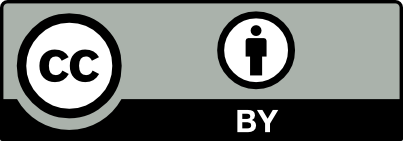Data Driven Computational Mechanics (DDCM) solves the boundary value problem by directly relying on the strain-stress data, bypassing the need for a constitutive model. In presence of materials exhibiting a softening response, Finite Element analyses performed with a constitutive model typically use a length scale, which can be introduced into the problem in multiple ways. A few commonly used ways include the addition of the gradient of damage variable in the energy density functional, using the gradient of strain while evaluating the internal variable, and so on. However, in the context of DDCM, these techniques may not be effective as the internal variables are not explicitly defined. Hence, the current article introduces a regularization technique, where the gradient of strain is constrained to lie within some interval. This prevents strain localization within an element by introducing a length scale into the problem. This article demonstrates the effectiveness of such a regularization technique in the case of 1D problems using a constitutive model while comparing its performance with strain gradient (SG) models.
Révisé le :
Accepté le :
Publié le :
Vasudevan Kamasamudram 1 ; Laurent Stainier 1
 CC-BY 4.0
CC-BY 4.0
@article{CRMECA_2023__351_G1_125_0,
author = {Vasudevan Kamasamudram and Laurent Stainier},
title = {A strain based {Lipschitz} regularization for materials undergoing damage},
journal = {Comptes Rendus. M\'ecanique},
pages = {125--149},
publisher = {Acad\'emie des sciences, Paris},
volume = {351},
year = {2023},
doi = {10.5802/crmeca.176},
language = {en},
}
TY - JOUR AU - Vasudevan Kamasamudram AU - Laurent Stainier TI - A strain based Lipschitz regularization for materials undergoing damage JO - Comptes Rendus. Mécanique PY - 2023 SP - 125 EP - 149 VL - 351 PB - Académie des sciences, Paris DO - 10.5802/crmeca.176 LA - en ID - CRMECA_2023__351_G1_125_0 ER -
Vasudevan Kamasamudram; Laurent Stainier. A strain based Lipschitz regularization for materials undergoing damage. Comptes Rendus. Mécanique, Volume 351 (2023), pp. 125-149. doi : 10.5802/crmeca.176. https://comptes-rendus.academie-sciences.fr/mecanique/articles/10.5802/crmeca.176/
[1] Enhanced damage modelling for fracture and fatigue, Ph. D. Thesis, Technische Universiteit Eindhoven, Eindhoven, Deutschland (1999) | DOI
[2] A critical comparison of nonlocal and gradient-enhanced softening continua, Int. J. Solids Struct., Volume 38 (2001) no. 44-45, pp. 7723-7746 | DOI | Zbl
[3] Localisation issues in local and nonlocal continuum approaches to fracture, Eur. J. Mech., A, Solids, Volume 21 (2002) no. 2, pp. 175-189 | DOI | MR | Zbl
[4] Nonlocal damage theory, J. Eng. Mech., Volume 113 (1987) no. 10, pp. 1512-1533 | DOI
[5] On first strain-gradient theories in linear elasticity, Int. J. Solids Struct., Volume 4 (1968) no. 1, pp. 109-124 | DOI | Zbl
[6] Crack tip fields in strain gradient plasticity, J. Mech. Phys. Solids, Volume 44 (1996) no. 10, pp. 1621-1648 | DOI
[7] Strain-gradient vs damage-gradient regularizations of softening damage models, Comput. Methods Appl. Mech. Eng., Volume 340 (2018), pp. 424-450 | DOI | MR | Zbl
[8] Analysis of non-local models through energetic formulations, Int. J. Solids Struct., Volume 40 (2003) no. 12, pp. 2905-2936 | DOI | MR | Zbl
[9] The issues of the uniqueness and the stability of the homogeneous response in uniaxial tests with gradient damage models, J. Mech. Phys. Solids, Volume 59 (2011) no. 6, pp. 1163-1190 | DOI | MR | Zbl
[10] An overview of the modelling of fracture by gradient damage models An overview of the modelling of fracture by gradient damage models An overview of the modelling of fracture by gradient damage models, Meccanica (2016) no. 12, p. 51 | DOI | Zbl
[11] Phase field modeling of fracture in rubbery polymers. Part I: Finite elasticity coupled with brittle failure, J. Mech. Phys. Solids, Volume 65 (2014) no. 1, pp. 93-113 | DOI | MR | Zbl
[12] Phase field modeling of fracture in multi-physics problems. Part I. Balance of crack surface and failure criteria for brittle crack propagation in thermo-elastic solids, Comput. Methods Appl. Mech. Eng., Volume 294 (2015), pp. 449-485 | DOI | MR | Zbl
[13] A level set based model for damage growth: The thick level set approach, Int. J. Numer. Methods Eng., Volume 86 (2011) no. 3, pp. 358-380 | DOI | MR | Zbl
[14] Graded damage in quasi-brittle solids, Int. J. Numer. Methods Eng., Volume 123 (2022) no. 11, pp. 2467-2498 | DOI | MR
[15] Lipschitz regularization for softening material models: The Lip-field approach, Comptes Rendus. Mécanique, Volume 349 (2021) no. 2, pp. 415-434 | DOI
[16] Data-driven computational mechanics, Comput. Methods Appl. Mech. Eng., Volume 304 (2016), pp. 81-101 | DOI | MR | Zbl
[17] Model-Free Data-Driven inelasticity, Comput. Methods Appl. Mech. Eng., Volume 350 (2019), pp. 81-99 | DOI | MR | Zbl
[18] Data-Driven multiscale modeling in mechanics, J. Mech. Phys. Solids, Volume 147 (2021), 104239 | DOI | MR
[19] Data-Driven nonlocal mechanics: Discovering the internal length scales of materials, Comput. Methods Appl. Mech. Eng., Volume 386 (2021), 114039 | DOI | MR | Zbl
[20] Evolution of rate-independent systems, Handbook of differential equations: Evolutionary equations. Vol. II, Volume 2, Elsevier, 2005, pp. 461-559 | Zbl
[21] Sur les matériaux standards généralisés, J. Méc., Paris, Volume 14 (1975), pp. 39-63 | Zbl
[22] Implicit gradient elasticity, Int. J. Numer. Methods Eng., Volume 67 (2006) no. 3, pp. 400-416 | DOI | MR | Zbl
[23] On the Existence, Uniqueness and Approximation of Saddle-Point Problems Arising from Lagrangian Multipliers, Publications des séminaires de mathématiques et informatique de Rennes (1974) no. S4, 1 | Numdam | Zbl
[24] A software package for sequential quadratic programming, DFVLR Forschungsber., Volume 28 (1988) | Zbl
[25] A fracture-controlled path-following technique for phase-field modeling of brittle fracture, Finite Elem. Anal. Des., Volume 113 (2016), pp. 14-29 | DOI | MR
- Data-driven micromorphic mechanics for materials with strain localization, Computer Methods in Applied Mechanics and Engineering, Volume 429 (2024), p. 117180 | DOI:10.1016/j.cma.2024.117180
Cité par 1 document. Sources : Crossref
Commentaires - Politique


